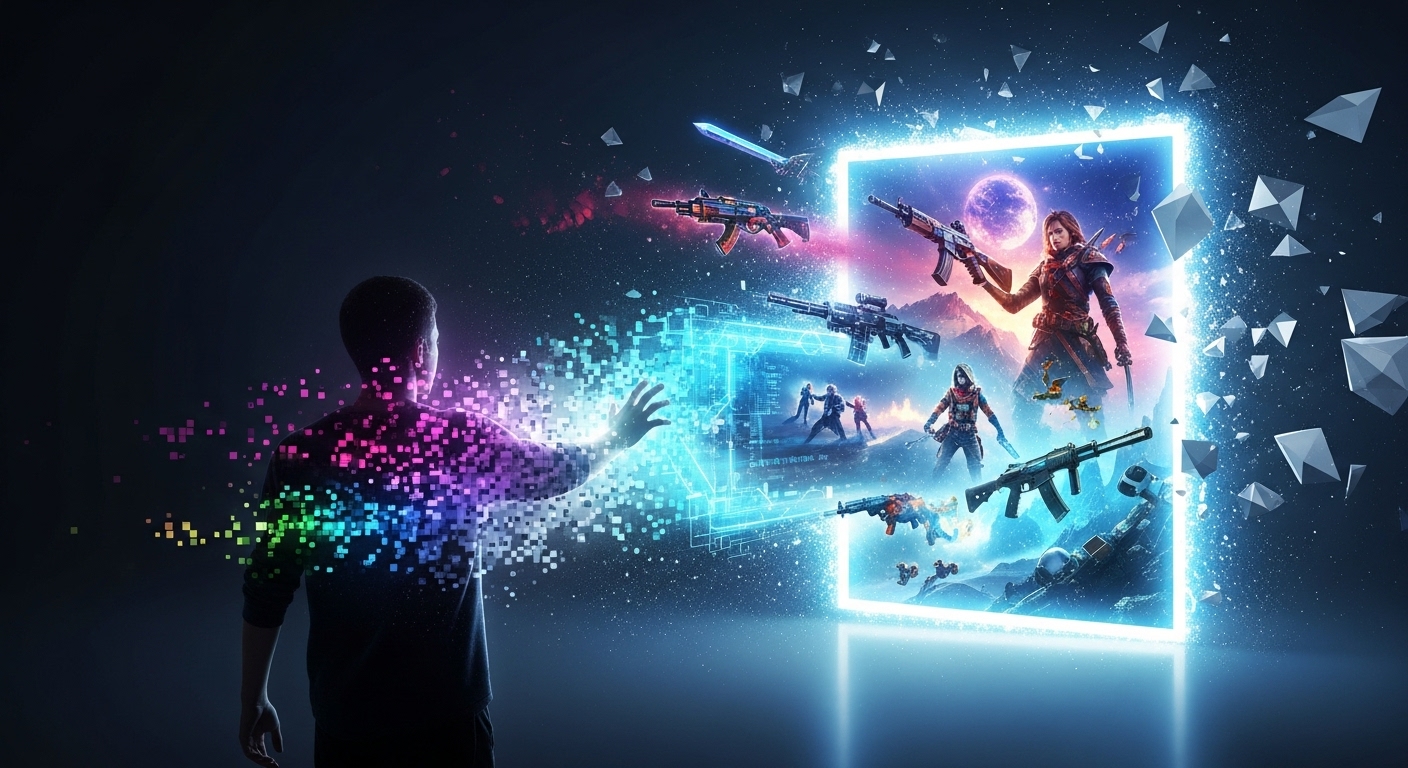Gaming has long been more than just a pastime. It has transformed into a massive cultural and economic force that spans generations, transcends borders, and continues to captivate millions of people worldwide. From its humble beginnings in arcades and early home consoles to the complex, graphically rich virtual worlds of today, gaming has seen an extraordinary evolution.
This blog post will explore the history, current trends, and the future of gaming, providing an in-depth analysis of how the industry has shaped pop culture, its impact on technology, and what lies ahead for gamers and developers alike.
The Humble Beginnings of Gaming
The Birth of Video Games
Video games as we know them today began their journey in the mid-20th century. The first recognizable video game was Tennis for Two (1958), created by physicist William Higinbotham. However, the game that truly sparked the video game revolution was Pong, released by Atari in 1972. Pong was a simple two-dimensional tennis simulation, yet it became an instant hit and is often credited with the birth of the gaming industry.
The late 1970s and early 1980s saw a boom in arcade games, with classics like Space Invaders, Pac-Man, and Donkey Kong drawing in crowds across the globe. These early arcade machines were a precursor to the more sophisticated home consoles that would follow. It was also during this time that the first gaming console, the Magnavox Odyssey, was introduced in 1972, though it didn’t have the same widespread appeal as arcade games.
The Rise of Home Consoles
By the mid-1980s, home consoles were becoming increasingly popular. The Nintendo Entertainment System (NES), released in 1985, was a game-changer, not just in terms of hardware, but also in how games were developed and marketed. Iconic titles like Super Mario Bros. and The Legend of Zelda not only revolutionized gameplay but also established Nintendo as a dominant force in the gaming world. Other consoles, such as the Sega Genesis, came onto the scene, leading to a fierce rivalry between the two companies that would shape the future of the industry.
The 1990s brought even more innovation with the arrival of 3D graphics and more powerful consoles. Sony PlayStation made its debut in 1994, and with it came some of the most beloved games of all time, such as Final Fantasy VII, Metal Gear Solid, and Gran Turismo. This era marked the beginning of gaming as an art form, with developers striving to create deeper, more immersive experiences that could rival other forms of entertainment, like movies.
The Expanding Gaming Universe
The Age of Online Gaming
The late 1990s and early 2000s witnessed the rise of online multiplayer gaming. With the advent of high-speed internet, games like StarCraft and Warcraft allowed players to battle it out in real-time against opponents across the globe. By 2001, Xbox Live introduced console gamers to the world of online play, with Halo 2 being one of the first titles to showcase the full potential of online multiplayer experiences.
The success of online gaming marked a shift in how games were experienced. No longer did players have to be in the same room to enjoy a competitive experience. This led to the growth of multiplayer games, MMORPGs (Massively Multiplayer Online Role-Playing Games), and the rise of esports.
The Mobile Gaming Boom
As smartphones and tablets became more accessible, mobile gaming quickly became one of the largest sectors in the industry. Games like Angry Birds, Candy Crush Saga, and Pokémon GO introduced millions of people to gaming who had never considered it before. The accessibility of these games, paired with their simple yet addictive mechanics, helped shape the modern gaming landscape.
Mobile gaming also enabled indie developers to thrive, providing them with a platform to publish games that might not have had the same chance on traditional consoles or PC. This has led to an explosion of creative, innovative titles from independent developers.
The Rise of Streaming and Content Creation
In recent years, platforms like Twitch and YouTube have revolutionized the way gamers experience games. Live streaming allows gamers to broadcast their gameplay, interact with fans, and build communities. The rise of content creators, or “streamers,” has turned gaming into a spectator sport, with millions tuning in to watch their favorite personalities play games, provide commentary, or even participate in competitive esports tournaments.
In addition to entertainment, streaming platforms have also served as marketing tools for developers, offering a direct avenue for them to showcase upcoming games to a global audience. The relationship between developers, players, and content creators has become more symbiotic than ever before, further blurring the lines between producer and consumer.
Key Trends in the Modern Gaming Landscape
The Growth of Virtual Reality (VR) and Augmented Reality (AR)
The technological advancements of the past decade have opened up new possibilities in gaming. Virtual reality (VR) and augmented reality (AR) are two of the most exciting developments. VR technology immerses players in entirely virtual environments, allowing them to interact with games in ways previously thought impossible. Games like Beat Saber, Half-Life: Alyx, and The Walking Dead: Saints & Sinners have shown the potential of VR gaming, offering experiences that are incredibly immersive and engaging.
AR, on the other hand, blends the virtual with the real world. Pokémon GO is perhaps the most well-known example, but AR has the potential to transform gaming into a more interactive, location-based experience. It is still early days for both VR and AR, but the technology is progressing rapidly, and it’s only a matter of time before it becomes more mainstream.
Cross-Platform Play and the Death of Console Exclusivity
In the past, console exclusivity was a major selling point for gaming platforms. Players had to choose between systems based on the exclusive titles each platform offered. However, as the gaming community has become more interconnected, there has been a push toward cross-platform play, allowing gamers to play together regardless of the device they are using.
Games like Fortnite, Minecraft, and Rocket League have made cross-platform play a standard feature, enabling friends to game together no matter what platform they own. This trend is likely to continue, as developers realize that fostering a larger, more unified community benefits everyone.
The Impact of Cloud Gaming
Cloud gaming is another technology that promises to reshape the industry. Services like Google Stadia, NVIDIA GeForce Now, and Xbox Cloud Gaming allow players to stream games directly to their devices without the need for powerful hardware. This has the potential to democratize gaming by making high-end titles accessible to those without gaming PCs or consoles.
While cloud gaming is still in its infancy, the technology is improving rapidly. As internet speeds continue to increase and infrastructure improves, the potential for cloud gaming to replace traditional console gaming becomes more likely. This shift could have major implications for both consumers and developers, as it opens up new avenues for distribution and reduces the need for physical hardware.
The Future of Gaming
AI and Procedural Generation
Artificial intelligence (AI) and procedural generation are two of the most exciting frontiers in game development. AI is already being used to create more dynamic and realistic NPCs (non-playable characters) that react to players in real time. This allows for more organic and engaging storytelling, as NPCs are no longer static characters but rather part of a living, breathing world.
Procedural generation, the technique of using algorithms to create content, has also gained traction. Games like No Man’s Sky have used procedural generation to create vast, procedurally generated worlds that players can explore indefinitely. As these technologies improve, we can expect even more expansive and immersive worlds, where no two playthroughs are ever the same.
The Metaverse and Gaming’s Role in Virtual Worlds
The idea of the “metaverse” has gained significant attention in recent years. Companies like Meta (formerly Facebook) have heavily invested in the development of virtual worlds where users can interact, socialize, and play games in fully immersive environments. While the concept of the metaverse is still evolving, gaming is poised to play a major role in its development.
The integration of gaming and social interaction will likely lead to new types of virtual experiences, where players can not only play games but also attend virtual concerts, participate in social events, and explore fully realized virtual worlds. The potential for cross-industry collaboration, such as virtual shopping experiences, virtual tourism, and even virtual workspaces, could lead to a more interconnected and immersive internet experience.
The Evolution of Game Design
As technology advances, so too does game design. Developers are constantly pushing the boundaries of what is possible, creating games that are not only visually stunning but also deeply interactive and emotionally resonant. The trend toward more narrative-driven experiences, as seen in games like The Last of Us, Red Dead Redemption 2, and Cyberpunk 2077, suggests that the future of gaming will be as much about storytelling as it is about gameplay mechanics.
Moreover, there is a growing emphasis on inclusivity and accessibility in game design. Developers are increasingly focusing on making games more accessible to a wider range of players, whether through customizable difficulty settings, colorblind modes, or more diverse character representation. This shift towards inclusivity will likely continue, ensuring that gaming remains a medium that is open and welcoming to everyone.
Conclusion
The world of gaming is vast, dynamic, and constantly evolving. From its humble beginnings in arcades to the immersive virtual realities of today, gaming has come a long way. It is now a global phenomenon that influences culture, technology, and even economics.



